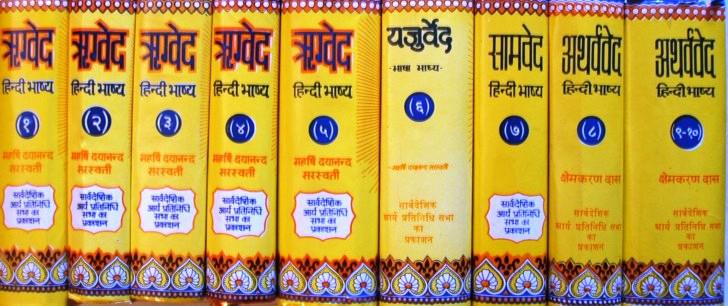In our modern world of artificial lighting, climate-controlled environments, and processed foods, we have drifted far from the natural rhythms that once guided human life. Yet our bodies still carry the ancient wisdom of seasonal cycles, responding to changes in light, temperature, and the earth's energy. Ayurveda, the 5,000-year-old system of natural healing, offers profound insights into how we can realign ourselves with nature's patterns for optimal health and vitality. For those interested in deepening their understanding of these principles, ayurveda short courses provide an excellent foundation for integrating these timeless practices into daily life.
The concept of seasonal living in Ayurveda is not merely about adjusting our wardrobes or switching from hot soups to cold salads. It is a comprehensive approach that recognises how the changing seasons affect our physical constitution, mental state, and spiritual well-being. By understanding and working with these natural fluctuations, we can prevent illness, enhance our energy, and maintain the delicate balance that Ayurveda calls perfect health.
Understanding the Seasonal Doshas
Ayurveda teaches us that everything in nature, including our bodies, is composed of three fundamental energies called doshas: Vata (air and space), Pitta (fire and water), and Kapha (earth and water). Each season carries its own dominant dosha, and as the external environment shifts, our internal constitution responds accordingly.
Spring awakens with Kapha energy – the heavy, moist qualities that help new life emerge from winter's dormancy. Just as the earth becomes soggy with melting snow and spring rains, our bodies may accumulate excess moisture and feel sluggish. This is why many people experience spring allergies, weight gain, or feelings of lethargy during this transition.
Summer blazes with Pitta energy, bringing intense heat, sharp focus, and dynamic activity. While this fire energy can fuel incredible productivity and passion, it can also lead to irritability, inflammation, and burnout if left unchecked. The key is learning to stay cool and calm while maintaining our vitality.
Autumn and early winter embody Vata energy – dry, light, and mobile like the wind that scatters fallen leaves. This season can enhance creativity and spiritual insight, but it may also increase anxiety, insomnia, and digestive irregularities if we do not ground ourselves properly.
Spring: Awakening and Cleansing
As winter's grip loosens and the first green shoots push through the earth, our bodies naturally begin their own awakening process. Spring is nature's time for renewal and detoxification, making it the perfect season to release accumulated toxins and excess weight from winter's more sedentary months.
The ancient Ayurvedic texts recommend beginning each spring with a gentle cleansing routine. This does not mean harsh fasting or extreme measures, but rather supporting your body's natural detoxification processes. Start your mornings with warm water infused with fresh lemon juice to kindle your digestive fire. Choose foods that are light, warming, and slightly bitter – think fresh greens, asparagus, artichokes, and peppery herbs that help cut through winter's accumulated heaviness.
Movement becomes especially important during spring's Kapha season. The earth element that dominates this time can make us feel stuck or stagnant, so incorporating more vigorous exercise helps shake off winter's lethargy. Whether it is a brisk morning walk, energetic yoga practice, or dancing in your living room, the goal is to get your blood flowing and your lymphatic system moving.
Spring is also an ideal time to establish new routines that will serve you throughout the year. The growing daylight naturally energises us, making it easier to wake up earlier and create morning rituals that set a positive tone for each day.
Summer: Cooling and Moderation
When summer arrives with its full solar intensity, Ayurveda teaches us the art of staying cool from the inside out. This goes far beyond seeking air conditioning or cold drinks – though these have their place. True cooling involves cultivating inner tranquillity and choosing foods and activities that do not add excess heat to our systems.
The summer diet emphasises sweet, bitter, and astringent tastes that naturally cool the body. Fresh fruits like melons, berries, and coconut provide natural sugars and electrolytes without the heating quality of processed sweets. Leafy greens, cucumber, and mint offer bitter and astringent tastes that help balance Pitta's intensity. Even your cooking methods can support cooling – try more raw foods, steaming instead of frying, and adding cooling spices like coriander, fennel, and cardamom to your meals.
Perhaps most importantly, summer calls us to moderate our activities and expectations. The "go, go, go" mentality that might serve us well in other seasons can lead to exhaustion and irritability when Pitta is already high. This is the season to work smarter, not harder, taking breaks during the hottest parts of the day and scheduling demanding activities for cooler morning or evening hours.
Water becomes your best friend during summer months – not just for drinking, but for cooling activities like swimming, taking cool showers, or simply spending time near lakes, rivers, or the ocean. The sound and sight of water help calm Pitta's fiery nature and restore inner peace.
Autumn: Grounding and Nourishing
As leaves begin their spectacular colour transformation and the air carries autumn's crisp promise, Vata energy starts to dominate the natural world. This season of transition can be particularly challenging for our nervous systems, as the irregular, mobile qualities of Vata can increase anxiety, insomnia, and digestive issues if we do not take steps to stay grounded.
Autumn's Ayurvedic routine emphasises regularity and nourishment. This is the time to establish consistent daily rhythms – waking and sleeping at the same times, eating regular meals, and creating predictable routines that anchor your nervous system. The wind element that governs Vata responds beautifully to structure and routine, even as it may resist these very things.
Your autumn diet should emphasise warm, moist, and slightly oily foods that counter Vata's dry, light qualities. Think hearty stews, root vegetables, whole grains, and warming spices like ginger, cinnamon, and cloves. This is nature's way of preparing us for winter's demands, building the deep nourishment and insulation we will need during the colder months.
Oil becomes particularly important during Vata season. Daily self-massage with warm sesame or almond oil – a practice called abhyanga – helps calm the nervous system and protect against autumn's drying effects. Many practitioners of ayurvedic beauty therapy incorporate these nourishing oil treatments as both therapeutic and cosmetic practices, recognising that true beauty comes from balanced health.
Winter: Conservation and Reflection
Winter invites us into nature's most introspective season, when the earth rests beneath blankets of snow and animals hibernate in warm burrows. For humans, winter is a time to conserve energy, build strength, and turn inward for reflection and renewal.
This season supports heavier, more nourishing foods that provide sustained energy and warmth. Hearty soups, slow-cooked grains, nuts, seeds, and warming spices become staples of the winter diet. Unlike summer's cooling foods, winter calls for meals that kindle our inner fire and provide the deep nutrition needed to maintain health during the darker months.
Winter's longer nights naturally encourage earlier bedtimes and more sleep – a gift we should embrace rather than resist. This extra rest supports our immune systems and gives our bodies time for deep repair and regeneration. It is also the perfect season for contemplative practices like meditation, journaling, or studying wisdom traditions.
For those drawn to holistic healing practices, winter provides ideal conditions for intensive study. This is when many people pursue spa therapy courses in Sri Lanka or similar programs, taking advantage of the season's inward focus to deepen their knowledge and skills.
Creating Your Personal Seasonal Practice
While these general guidelines provide a foundation for seasonal living, Ayurveda recognises that each person has a unique constitution that influences how they respond to seasonal changes. Someone with a predominantly Vata constitution might need extra grounding practices even during Pitta season, while a Kapha-dominant person might benefit from more energising activities year-round.
The key is developing sensitivity to your own patterns and responses. Start by noticing how your energy, mood, and physical symptoms change with the seasons. Do you feel more anxious during windy autumn days? Does summer heat make you irritable? Are you prone to spring congestion or winter depression?
Once you begin recognising these patterns, you can start making small adjustments that support your well-being. This might mean scheduling more challenging projects during your high-energy seasons while planning rest and reflection during times when your energy naturally dips.
Many people find that learning these principles through hands-on experience enhances their understanding. An ayurveda massage course in Sri Lanka, for example, teaches not just techniques but the underlying philosophy of how touch and therapeutic oils can help balance seasonal imbalances.
The Modern Application of Ancient Wisdom
In our globally connected world, we often experience what Ayurveda might call "seasonal confusion." We eat summer fruits in winter, stay up late with artificial lighting, and maintain the same hectic pace regardless of natural rhythms. While we cannot completely return to pre-industrial patterns of living, we can make conscious choices that honour our biological connection to seasonal cycles.
Simple practices like eating more local, seasonal foods naturally align us with our environment's changing needs. Growing some of your own herbs or vegetables, even in small containers, connects you directly to the earth's cycles. Spending time outdoors each day, regardless of weather, helps your body register seasonal changes and adjust accordingly.
The beauty of Ayurvedic seasonal routines lies not in their complexity but in their fundamental simplicity. They remind us that health is not about fighting against natural forces but about learning to flow with them skilfully. When we align our daily choices with seasonal energies, we often find that many health issues resolve naturally, our energy becomes more stable, and our overall sense of well-being improves.
As you begin experimenting with seasonal Ayurvedic routines, remember that this is a practice, not a perfection. Start with small changes that feel manageable and sustainable. Notice what works for your unique constitution and lifestyle. Over time, these small adjustments can create profound shifts in how you feel and function throughout the year.
The ancient seers who developed Ayurveda understood something we are only beginning to rediscover in modern science: that human health and natural cycles are intimately connected. By honouring this connection through seasonal routines, we not only improve our own well-being but also develop a deeper appreciation for the wisdom inherent in the natural world around us.








